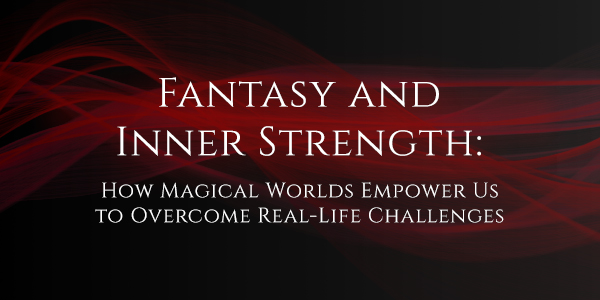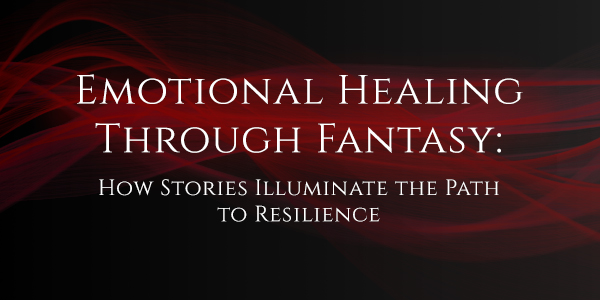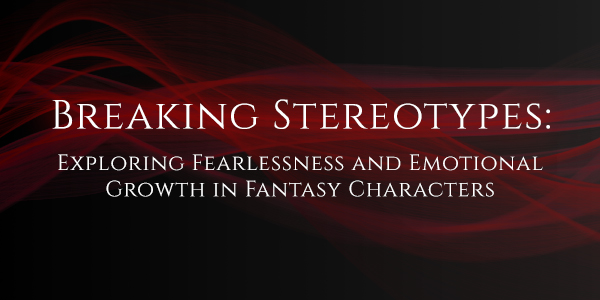Fantasy and Inner Strength: How Magical Worlds Empower Us to Overcome Real-Life Challenges
Fantasy books have a special power to enthrall readers with their fantastical worlds, fantastical creatures, and thrilling experiences. The genre frequently acts as a mirror reflecting our innermost wants, fears, and hardships, despite its escapist appeal. Themes of inner strength and personal development are at the heart of fantasy literature, inspiring readers to find their own bravery and resiliency in the face of hardship. A compelling illustration of how fantasy may reveal the route to inner strength, Zsofia Judit Baranyai’s book encourages readers to face their real-life obstacles with renewed resolve and confidence. Inner Strength: A Universal Theme A theme that cuts across genres, nations, and time is inner strength—the ability to endure, adjust, and develop in the face of adversity. But fantasy offers a particularly rich environment for examining this idea. The difficulties we confront in our daily lives are frequently magnified by the fantastical characters’ incredible trials and larger-than-life stakes. These stories serve as a reminder to readers that with bravery, resiliency, and self-belief, even the most formidable obstacles can be conquered. Ultima, the protagonist of Baranyai’s book, is a wonderful example of this concept. She starts her journey with a stoic acceptance of her fate as the thousandth and last sacrifice in a centuries-old pact. But as her tale progresses, Ultima’s inner fortitude emerges as her most distinctive quality, enabling her to survive in a magical and monster-filled world while regaining her humanity. Her development is evidence of the transformational potential of self-discovery and resiliency. The Hero’s Journey: A Blueprint for Growth The archetypal hero’s journey—a narrative framework that transports protagonists from their everyday world into a realm of adversity, metamorphosis, and victory—is a common theme in fantasy novels like Baranyai’s. This trip is a metaphor for personal development, showing how difficulties can spur significant transformation. Ultima’s trek into the land of monsters is a psychological and emotional one in addition to a physical one. Vulnerability and emotional openness progressively replace her earlier stoicism and detachment, which were traits that enabled her to survive. She discovers thru her struggles that real strength comes from accepting one’s emotions rather than repressing them. Her narrative encourages readers to consider their own experiences and to see obstacles as chances for personal development rather than insurmountable obstacles. The Role of Adversity in Building Strength Adversity frequently acts as the furnace in which inner strength is created in fantasy fiction. Protagonists must draw on strength and resiliency they were unaware they possessed in order to overcome difficult obstacles like facing their worst fears, traveling perilous terrain, or fighting dragons. These hardships provide readers with important lessons in tenacity and self-belief, reflecting the difficulties they encounter in their own lives. Ultima’s story is no exception. Her journey is fraught with danger and uncertainty, from her initial acceptance as a sacrificial offering to her encounters with Asier, the vampire prince. Yet, it is through these trials that she discovers her true potential. Her ability to adapt, confront her fears, and ultimately redefine her destiny underscores the idea that adversity is not a dead end but a doorway to growth and transformation. The Power of Connection and Compassion While inner strength is often portrayed as a solitary trait, fantasy literature frequently emphasizes the importance of connection and compassion in cultivating resilience. Protagonists rarely succeed in isolation; their journeys are enriched and supported by relationships with allies, mentors, and even adversaries who challenge them to grow. In Baranyai’s novel, Ultima’s relationship with Asier becomes a cornerstone of her transformation. Asier’s initial intrigue with Ultima’s fearlessness evolves into a deeper bond built on mutual respect and shared vulnerability. Their dynamic highlights the transformative power of connection, demonstrating that inner strength is often nurtured through meaningful relationships. For readers, this serves as a reminder that seeking support and building connections can be integral to overcoming challenges in their own lives. Fantasy as a Safe Space for Self-Exploration One of the most compelling aspects of fantasy literature is its ability to provide a safe space for self-exploration. The genre’s fantastical elements create a sense of distance from reality, allowing readers to engage with difficult themes—such as fear, loss, and self-doubt—in a way that feels manageable. By following characters like Ultima on their journeys of self-discovery, readers are invited to reflect on their own experiences and emotions, often gaining new insights and perspectives. For example, Ultima’s evolution from stoic sacrifice to empowered individual offers readers a powerful model for embracing their own inner strength. Her story encourages introspection, prompting readers to consider how they might confront their own fears and challenges with courage and resilience. The magical setting provides just enough distance to make this exploration feel safe, while the emotional truths at the heart of the story remain deeply relatable. Lessons for Real-Life Challenges The lessons embedded in fantasy stories often have profound real-world applications. Ultima’s journey, for instance, illustrates several key principles of inner strength: Conclusion Fantasy literature offers more than just an escape from reality; it provides a framework for understanding and cultivating inner strength. Through characters like Ultima, readers are invited to explore the depths of their own resilience, drawing inspiration from stories of courage, connection, and transformation. Zsofia Judit Baranyai’s novel stands as a shining example of how fantasy can empower readers to confront their real-world challenges with renewed confidence and determination. By weaving themes of inner strength and personal growth into her magical narrative, Baranyai has created a story that resonates far beyond the boundaries of its fantastical setting. Her work reminds us that even in the face of overwhelming odds, the human spirit is capable of extraordinary resilience. Through the lens of fantasy, readers are encouraged to discover their own capacity for courage and transformation, proving that the greatest adventures often begin within.


